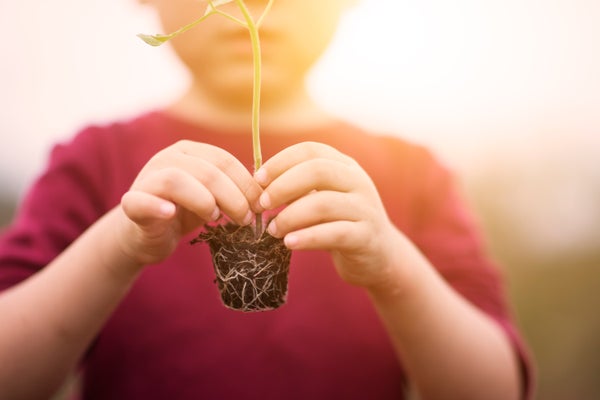This article was published in Scientific American’s former blog network and reflects the views of the author, not necessarily those of Scientific American
The school year is almost over and students are heading in different directions for the summer. Some may be planning for day camp, some may be spending days at home, some may be starting their first jobs, and others be looking forward to time with relatives. But whatever the coming months look like, there are options for bringing some STEM to the summer – no textbooks required.
Plant a Garden
There is no size requirement for enjoying the process of helping something to grow. Gardens can be a few herbs on the window sill, a tomato plant in a bucket on the porch, or a vegetable patch in the back yard. Gardens give kids a chance to watch something grow and change, but it also provides the opportunity to take care of something. For kids who are more interested in the logic behind plant care, spread a few cups with the same plant across the kitchen. Comparing the growth in the cups near the window to those on the top of the fridge (or even in the cupboard) can open doors to insights about light. If you live in an area where water is scarce, keep track of how much water goes into making a plant grow over the course of the summer. How many cups of water went into the 10 tomatoes on that plant?
On supporting science journalism
If you're enjoying this article, consider supporting our award-winning journalism by subscribing. By purchasing a subscription you are helping to ensure the future of impactful stories about the discoveries and ideas shaping our world today.
Be a Citizen Scientist
Maybe some kids and teens are excited by the idea of helping collect data that scientist will use for their work – getting to be a member of the team. For many citizen science projects, no lab equipment is required. With NestWatch you can learn how to observe and report on bird nests in your neighborhood (or even on your fire escape). Kids can be part of a global effort by watching for nests, eggs, and baby birds near home. Firefly Watch wants to know if and when lightening bugs show up in your yard. Kids who want to get their hands dirty can help the Great Lakes Worms Watch and learn about invasive species along the way. Kids up north can look to the sky for the Aurorasaurus project. With citizen science projects monitoring everything from clouds and galaxies to light pollution and landslides, budding scientists can find a new way to contribute important data every week.
Get to Know Your Stars
If you are somewhere where you can see the stars at night – or are heading there for a weekend – get to know your local sky. Find out what stars and constellations will be overhead and practice picking them out. Find out when the International Space Station will be passing overhead; you can pick it out with the naked eye. If you have a small telescope or have a museum nearby, look for stargazing events. And if you can time it right, summer meteor showers are a great excuse for a late-night or early-morning pajama party under the stars.
Build a Rube Goldberg Machine
Start a box for used tubes from paper towels, ping pong balls, paint sticks, string, matchbox cars, or anything else that you think might make a good Rube Goldberg Machine. Start small – getting just a few steps to work can be a challenge. But a few minutes on the internet will show you that, for committed builders, the sky is the limit.
Cook
For kids who just want to do something a bit more hands on, consider the kitchen. Make your favorite cookie recipe, but break it into small batches and adjust one key ingredient in each version. See what happens. Try to use eggs a dozen different ways – from scrambled for breakfast to crunchy meringues for dessert, or even as an impromptu introduction to emulsifiers. Cooking and baking help to develop skills and confidence from measuring and planning to cutting and careful clean up. Mixers, sifters, toaster ovens, and stove tops provide their own kind of lab. And (hopefully) there is something to eat at the end of the day.
Map Your Walk – By Hand
Maps are a great way for kids to interact with a model and compare it to the real world around them. With practice they can start to pick out the lines and labels as streets and parks. Try finding your apartment, finding your grocery store, and drawing out the route to take in advance. Let them try their hand at navigating your walk around the neighborhood. If you are able to find topographic maps, pick out a few points for comparison. What does a hill look like on paper compared to outside? Kids can map their yard, map their living room, or even map the imaginary kingdom in their heads.
